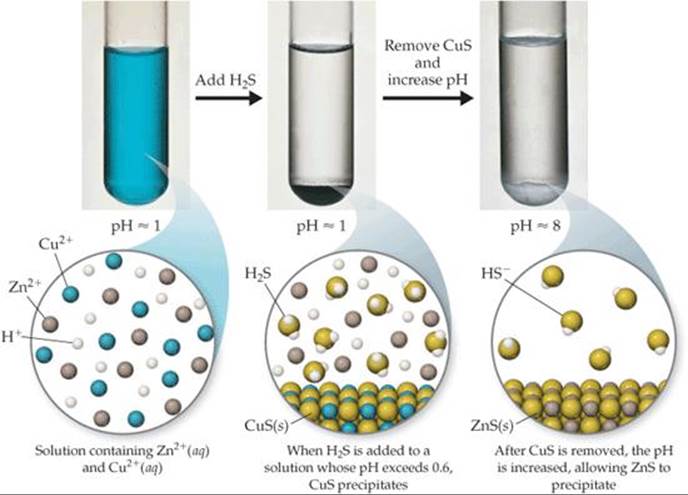

During the final step, called aging in a shear field, the precipitate particles repeatedly collide and stick, then break apart, until a stable mean particle size is reached, which is dependent upon individual proteins. Once the particles reach a critical size (0.1 µm to 10 µm for high and low shear fields, respectively), by diffusive addition of individual protein molecules to it, they continue to grow by colliding into each other and sticking or flocculating. Growth of these particles is under Brownian diffusion control. Next, proteins undergo a nucleation phase, where submicroscopic sized protein aggregates, or particles, are generated. Enough mixing time is required for molecules to diffuse across the fluid eddies. Mixing causes the precipitant and protein to collide.

First, a precipitating agent is added and the solution is steadily mixed. Protein precipitate formation occurs in a stepwise process. This water network has a damping effect on the attractive forces between proteins. Water establishes a concentration gradient around the protein, with the highest concentration at the protein surface. Water forms a solvation layer around the hydrophilic surface residues of a protein. Repulsive electrostatic forces also form when proteins are dissolved in water. The presence of these solvation layers cause the protein to have fewer ionic interactions with other proteins and decreases the likelihood of aggregation. Next to this layer is another solvation layer that is less rigid and, as one moves away from the protein surface, contains a decreasing concentration of counterions and an increasing concentration of co-ions. Upon dissolution in an electrolyte solution, solvent counterions migrate towards charged surface residues on the protein, forming a rigid matrix of counterions on the protein's surface. These repulsive forces between proteins prevent aggregation and facilitate dissolution. Repulsive electrostatic forces form when proteins are dissolved in an electrolyte solution. Knowledge of a protein's amino acid composition will aid in determining an ideal precipitation solvent and methods. Charged and polar surface residues interact with ionic groups in the solvent and increase the solubility of a protein. Proteins that have high hydrophobic amino acid content on the surface have low solubility in an aqueous solvent. Hydrophobic residues predominantly occur in the globular protein core, but some exist in patches on the surface. The solubility of proteins in aqueous buffers depends on the distribution of hydrophilic and hydrophobic amino acid residues on the protein's surface. 3.3 Continuous stirred tank reactors (CSTR).2.3 Precipitation with miscible solvents.2.1.1 Energetics involved in salting out.


 0 kommentar(er)
0 kommentar(er)
